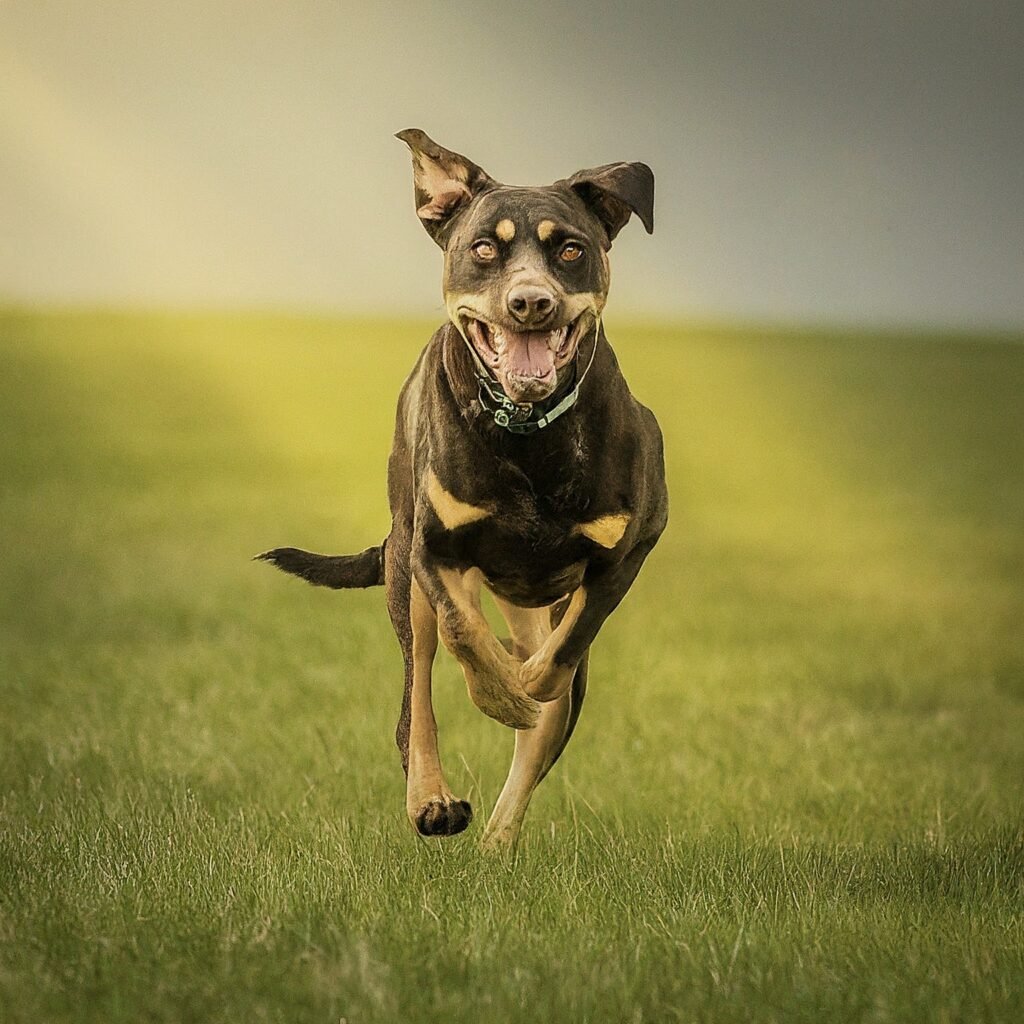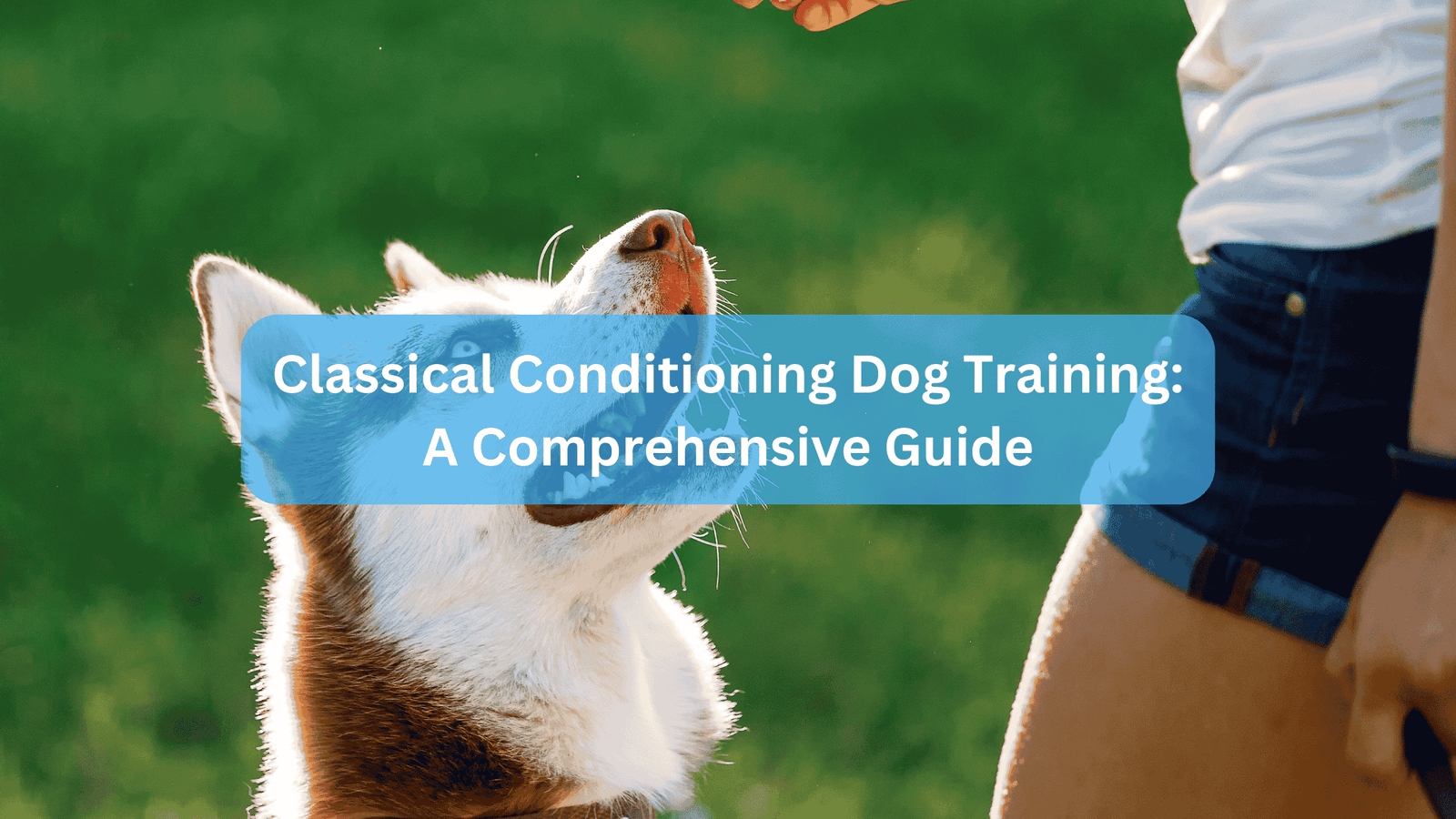Classical conditioning Dog Training is a powerful and often underutilized method in dog training that can significantly enhance your canine companion’s behavior and emotional responses.
This technique, rooted in the principles of associative learning, allows dogs to form connections between stimuli and responses, leading to positive behavioral changes.
In this article, we will explore the fundamentals of classical conditioning, its applications in dog training, and practical tips for implementation.
Understanding Classical Conditioning Dog Training

Classical conditioning, first identified by Russian physiologist Ivan Pavlov, involves creating associations between a neutral stimulus and an unconditioned stimulus that naturally elicits a response.
Over time, the neutral stimulus becomes a conditioned stimulus that triggers a conditioned response.
Key Components of Classical Conditioning Dog Training
- Unconditioned Stimulus (US): A stimulus that naturally and automatically triggers a response (e.g., food).
- Unconditioned Response (UR): The natural reaction to the unconditioned stimulus (e.g., salivation).
- Conditioned Stimulus (CS): A previously neutral stimulus that, after being paired with the unconditioned stimulus, begins to evoke a conditioned response (e.g., the sound of a bell).
- Conditioned Response (CR): The learned response to the conditioned stimulus (e.g., salivating at the sound of the bell).
This process illustrates how dogs can learn to associate specific cues with positive outcomes, which can be harnessed to improve training outcomes.
The Role of Classical Conditioning in Dog Training
While operant conditioning focuses on modifying behavior through rewards and punishments, classical conditioning shifts the focus to the emotional responses that drive behavior.
By creating positive associations, trainers can help dogs overcome fears, reduce anxiety, and enhance their overall behavior.
Applications of Classical Conditioning Dog Training
- Socialization: Introducing puppies to various stimuli (people, sounds, environments) while pairing these experiences with treats can foster a positive association, reducing fear and anxiety in adulthood.
- Desensitization: If a dog has a negative association with a specific stimulus (like loud noises), classical conditioning can help change that perception. For example, pairing the sound of thunder with treats can help the dog learn that storms can be associated with positive experiences.
- Behavior Modification: Classical conditioning can assist in modifying undesirable behaviors by changing the emotional response to specific triggers. For instance, if a dog is aggressive towards other dogs, pairing the sight of other dogs with treats can help create a more positive association.
Practical Techniques for Implementing Classical Conditioning in Dog Training

To effectively apply classical conditioning in your dog training regimen, consider the following strategies:
1. Identify the Right Stimuli
Choose a neutral stimulus that you can consistently pair with an unconditioned stimulus.
For example, if you want your dog to associate the sound of a clicker with treats, ensure that the clicker (neutral stimulus) is always followed by a treat (unconditioned stimulus).
2. Timing is Key
The timing of the stimuli is crucial. The neutral stimulus should precede the unconditioned stimulus by a few seconds to help the dog make the connection.
For example, click the clicker just before giving the treat.
3. Consistency is Essential
Repetition strengthens the association in your dog’s mind. Consistently pairing the conditioned and unconditioned stimuli will help your dog learn faster.
4. Monitor Responses
Pay close attention to your dog’s reactions during training. Adjust your approach as needed to ensure that the training remains positive and effective.
If your dog shows signs of stress or fear, it may be necessary to slow down the process.
Examples of Classical Conditioning Dog Training in Action
Marker Training
One of the most effective uses of classical conditioning in dog training is through marker training.
In this method, a clicker or verbal marker is used to signal to the dog that they have performed a desired behavior.
By consistently pairing the sound of the clicker with a treat, the dog learns to associate the sound with positive reinforcement.
Acclimation to New Objects
When introducing your dog to new objects, such as a crate or muzzle, classical conditioning can help create a positive association.
For example, each time you present the crate, offer treats and praise.
Over time, your dog will learn to associate the crate with positive experiences, making them more comfortable with it.
Counter-Conditioning to Negative Stimuli
If your dog has a negative association with a specific environment, such as the veterinarian’s office, you can use counter-conditioning techniques.
Pair the visit with treats, toys, or playtime to help shift the dog’s emotional response from fear to enjoyment.
Frequently Asked Questions About Classical Conditioning Dog Training
What is the difference between classical conditioning and operant conditioning?
Classical conditioning focuses on creating associations between stimuli and involuntary responses, while operant conditioning involves modifying behavior through rewards and punishments. Both methods can be effective when used together in a comprehensive training program.
How long does it take for a dog to learn through classical conditioning?
The time it takes for a dog to learn through classical conditioning varies based on the individual dog, the consistency of training, and the type of association being formed. Generally, with consistent practice, dogs can begin to show changes in behavior within a few sessions.
Can classical conditioning help with aggressive behavior?
Yes, classical conditioning can be effective in modifying aggressive behavior. By pairing the presence of triggers (such as other dogs) with positive experiences (like treats), you can help your dog develop a more positive emotional response to those triggers.
How can classical conditioning help with my dog’s fear of thunderstorms?
Classical conditioning can be particularly effective for dogs with a fear of thunderstorms. By gradually exposing your dog to the sound of thunder while providing treats and positive reinforcement, you can help them associate the sound with a positive experience, reducing their fear over time.
What are some common mistakes to avoid when using classical conditioning with dogs?
Some common mistakes include inconsistent timing of stimuli, using overly intense or frightening stimuli, failing to reward promptly, and not being patient enough. It’s essential to ensure that the training environment is positive and that the dog is not overwhelmed.
Can classical conditioning be used to help dogs with separation anxiety?
Yes, classical conditioning can help dogs with separation anxiety by creating positive associations with being alone. Gradually increasing the time your dog spends alone while providing treats or toys can help them learn that being alone is a safe and positive experience.
What are some advanced techniques in classical conditioning for dog training?
Advanced techniques include using multiple conditioned stimuli, chaining behaviors (linking several behaviors together), and employing counter-conditioning with desensitization. These techniques require a deeper understanding of your dog’s responses and may involve more complex training plans.
Also Read: My Dog Ate a Tampon: A Comprehensive Guide
Also Read: German Shepherd Mastiff Mix: A Comprehensive Guide
Conclusion
Classical conditioning is a vital tool in dog training that can lead to profound changes in your dog’s behavior and emotional responses.
By understanding and applying the principles of classical conditioning, you can create a more harmonious relationship with your canine companion.
Whether you’re working on socialization, desensitization, or behavior modification, classical conditioning offers a compassionate and effective approach to training.
Remember, patience and consistency are key to unlocking the full potential of this powerful training method.
Sources:
- https://www.whole-dog-journal.com/training/classical-conditioning-how-your-dog-learns-by-association/
- https://petcoach.sg/classical-conditioning-dog-training/
- https://www.gooddogsantacruz.com/the-magic-of-classical-conditioning/
- https://www.dognerdly.com/training/how-to-use-classical-conditioning-in-dog-training/
- https://www.varsitytutors.com/gre_subject_test_psychology-help/classical-conditioning
- https://www4.uwsp.edu/psych/dog/LA/DrPClassical.html







